Prepare for an enchanting journey into the world of blue-flowered plants. These living artworks don’t just beautify your garden; they paint the vertical landscape with nature’s purest blues. From delicate tendrils to robust vines, you’ll discover the allure of blue-hued blossoms that evoke feelings of serenity, mystique, and wonder. Join us as we explore the magic of 13 plants with blue flowers, sure to captivate and inspire.
Blue Jade Vine (Strongylodon macrobotrys)

Renowned for its stunning blue-green or turquoise blue cascading flowers, the Blue Jade Vine is a visual masterpiece that flourishes in USDA Zones 9-12. Part of the Fabaceae family, it can grace your garden with its otherworldly blooms. Just ensure it receives plenty of sun, and you’ll have a piece of the tropics right in your outdoor space.
Bengal Clockvine (Thunbergia grandiflora)

This enchanting vine, also known as Blue Trumpet Vine, thrives in USDA Zones 9-11 and is a true showstopper. With its velvety cobalt blue flowers, it can transform any gazebo or pergola into a serene, dreamlike sanctuary. Growing this captivating climber in a sunny spot with well-draining soil is the key to a lush, vibrant display of its azure blooms. You’ll have an irresistible escape to a blue-hued paradise right in your garden.
Passionflower Vine (Passiflora sp)
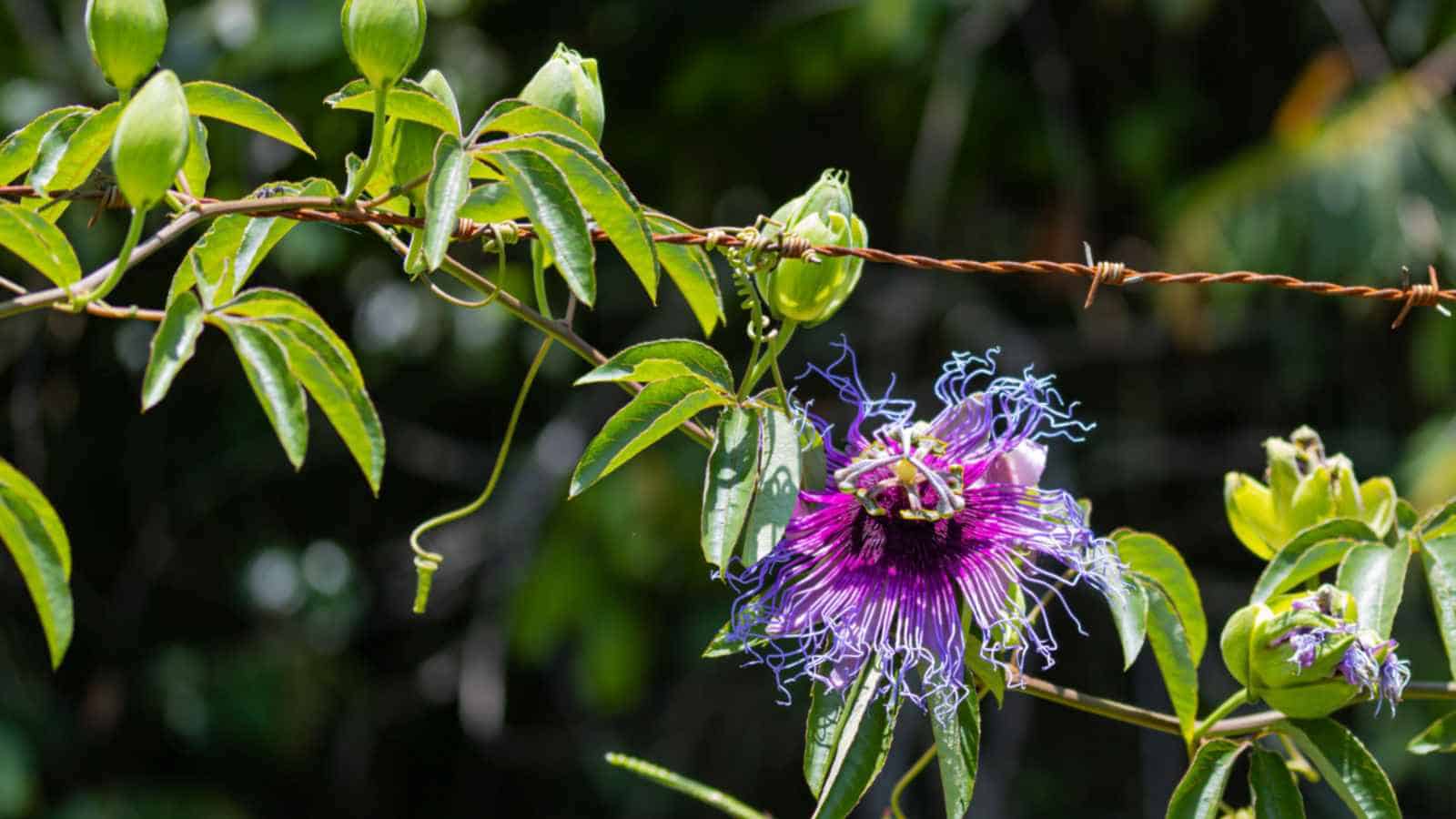
Hailing from South America and thriving in USDA Zones 6-10, the Passionflower vine isn’t just a treat for the eyes; it also delights the senses with its heavenly fragrance. Some cultivars even produce sweet, edible passion fruits, making it a dual-purpose delight. To witness this mesmerizing blue beauty and enjoy the fruits of your labor, provide well-drained soil and a sunny spot to this vine.
Blue Butterfly Pea (Clitoria ternatea)

Native to Southeast Asia and flourishing in USDA Zones 8-11, the Blue Butterfly Pea enchants with its butterfly-like blooms featuring a creamy white center. It’s a member of the legume Fabaceae family and can thrive in a variety of garden settings, from trellises to arbors, providing a striking blue accent that is bound to leave your garden guests spellbound.
Morning Glory (Ipomoea sp)
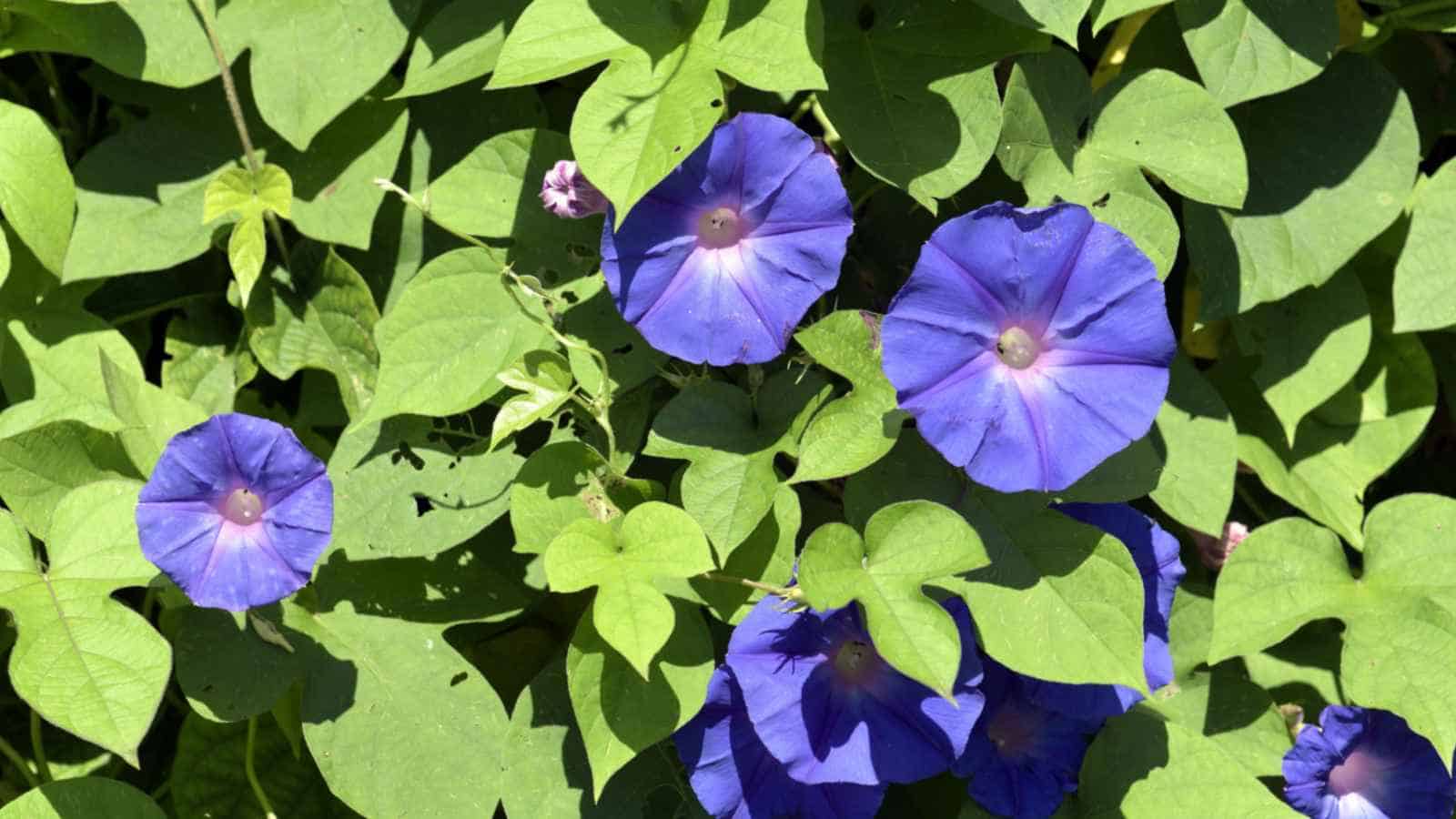
A garden favorite across USDA Zones 2-11, Morning Glory is a buzz of activity, attracting bees, hummingbirds, and other pollinators wherever it grows. If you’re after blue flowers, ‘Heavenly Blue’ is your go-to variety, sporting striking azure petals. Easy to cultivate, this charming climber adds a touch of whimsy to your garden with its heartwarming morning blooms.
Betty Corning Clematis (Clematis ‘Betty Corning’)
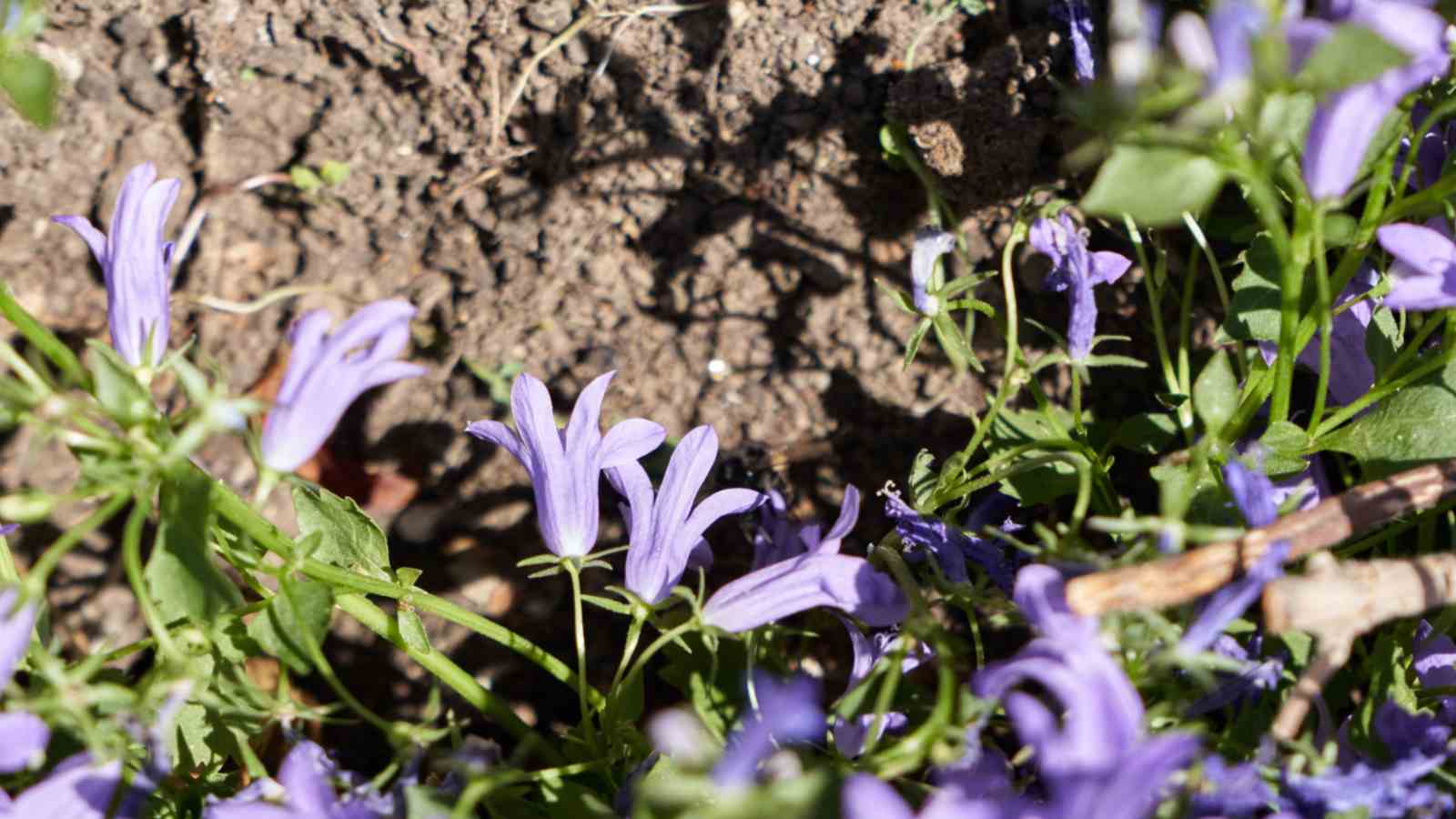
Thriving in USDA Zones 4-9, this plant boasts purple-blue blooms that harmonize beautifully with light green foliage. If you have a well-lit garden space, Betty Corning Clematis will flourish and enchant with its delicate beauty.
Skyblue Clustervine (Jacquemontia pentanthos)

Ideal for those desiring deep blue flowers, this plant is a climber that can reach heights of 20-30 feet. To prevent it from becoming invasive, occasional pruning may be necessary. In USDA Zones 9-11, it offers a mesmerizing blue spectacle that will elevate your garden to new heights.
Queen’s Wreath (Petrea volubilis)
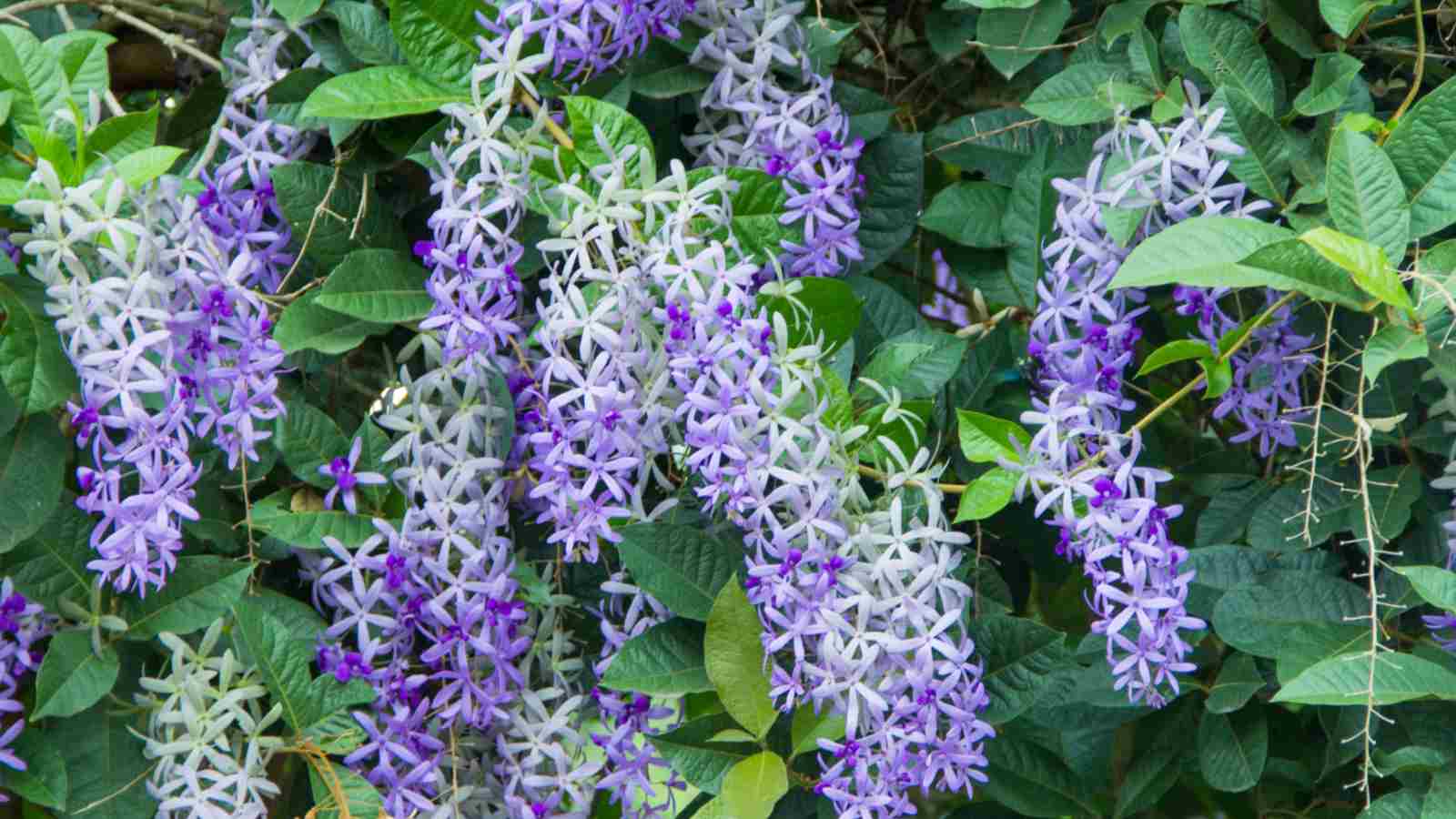
Flourishing in USDA Zones 9-11, the Queen’s Wreath lives up to its regal name, with clusters of purple-blue flowers. To ensure its full splendor, it craves abundant sunlight and will reward you with its royal display.
Garlic Creeper (Mansoa alliacea)

This striking vine, surviving in USDA Zones 8-11, grabs attention with its magnificent purple-blue flowers that climb over walls and pergolas. To ensure its super blooms, bask it in bright sunlight and watch your garden transform into a fragrant and vibrant oasis.
Blue Potato Vine (Lycianthes rantonnetii)
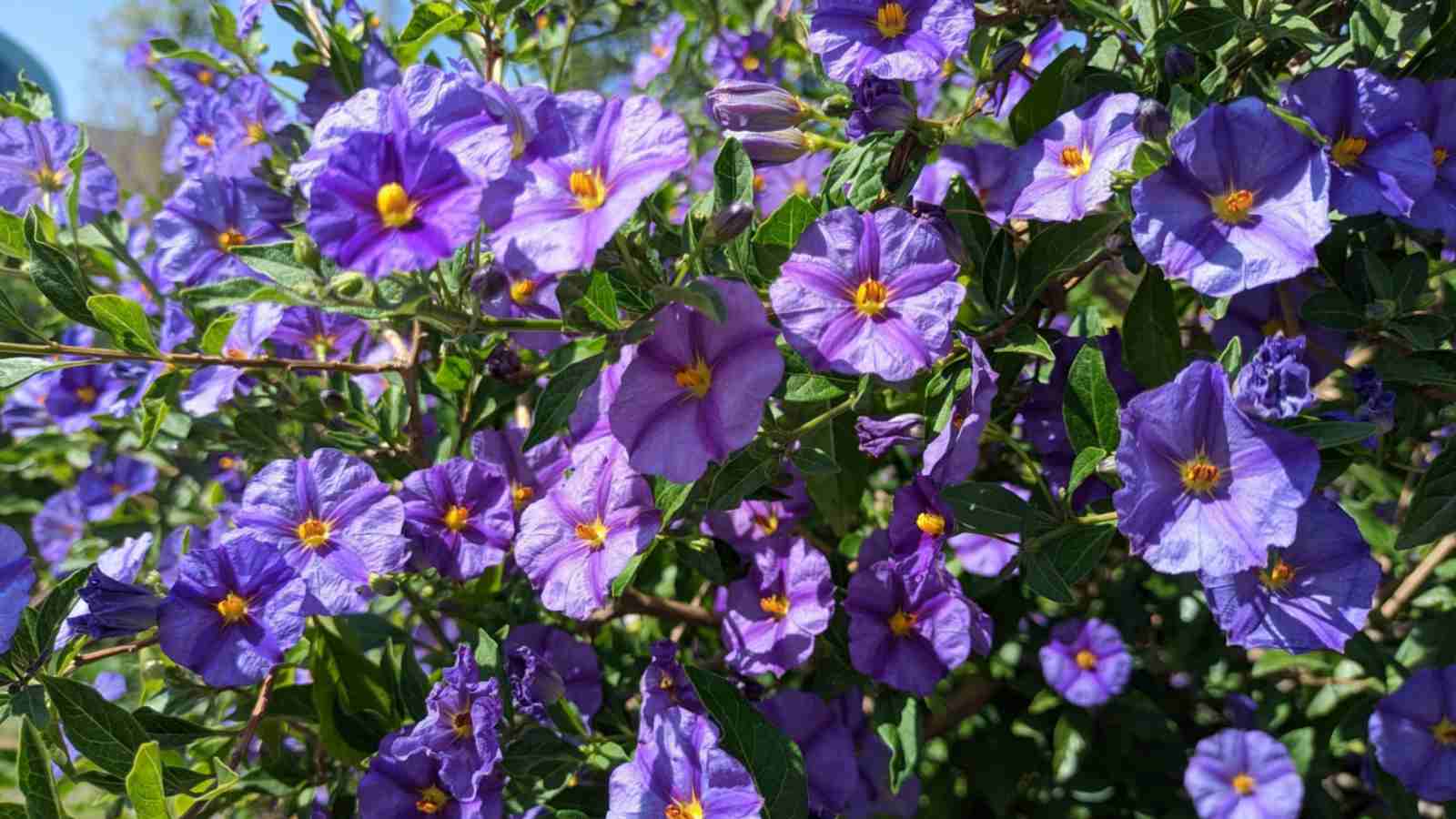
This vine, thriving in USDA Zones 8-11, showcases dense clusters of lilac-blue flowers that beautifully complement its light green foliage. A stunning addition to your garden landscape, it adds a touch of elegance and allure.
Plumbago (Plumbago auriculata)
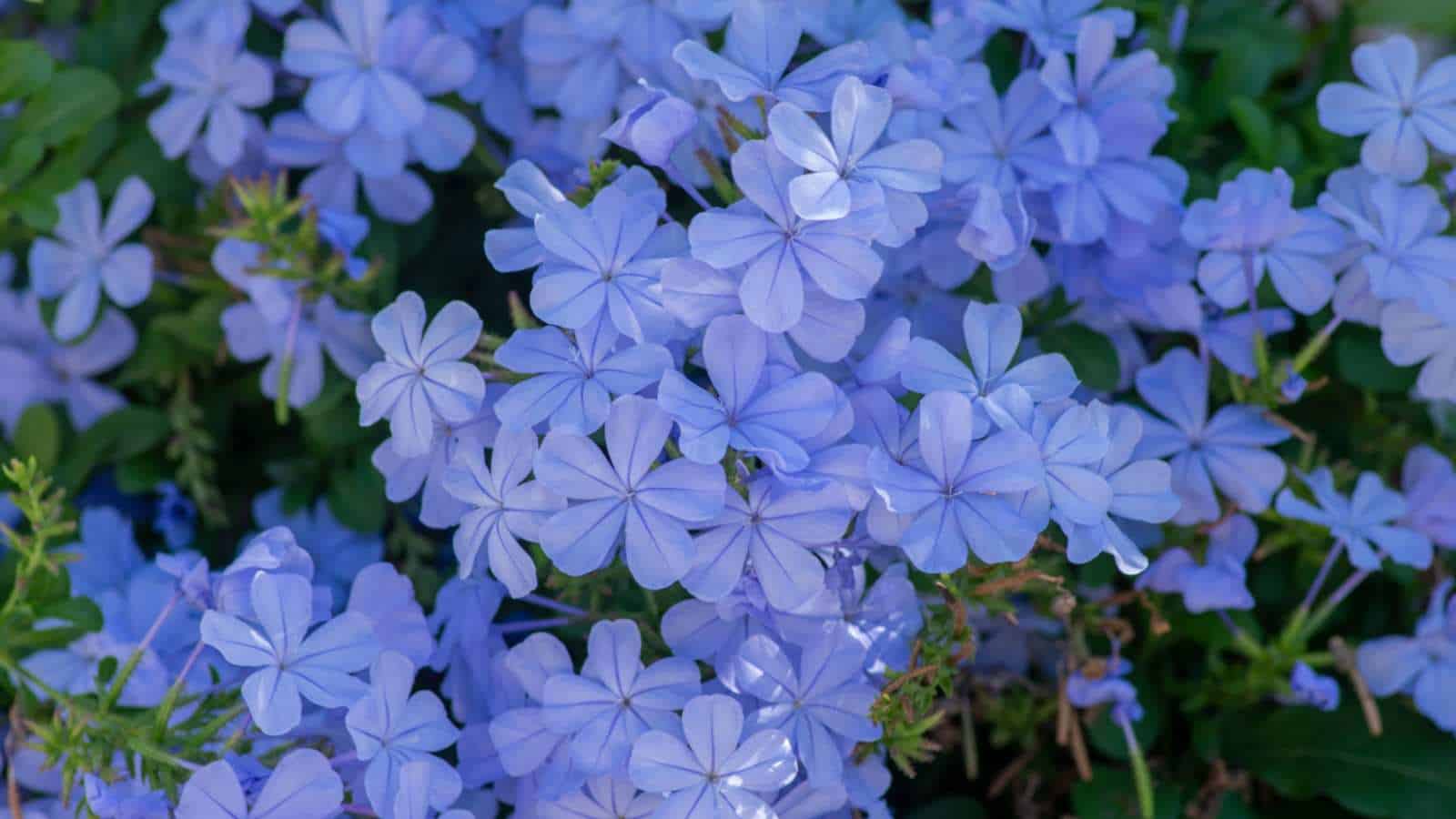
Although not a true vine but a hardy herbaceous plant, Plumbago mimics the climbing habit. In USDA Zones 5-9, it reaches out and adorns any surface it can cling to, producing clusters of lovely, sky-blue, tubular blooms. A versatile and vibrant addition to your garden.
Downy Clematis (Clematis macropetala)
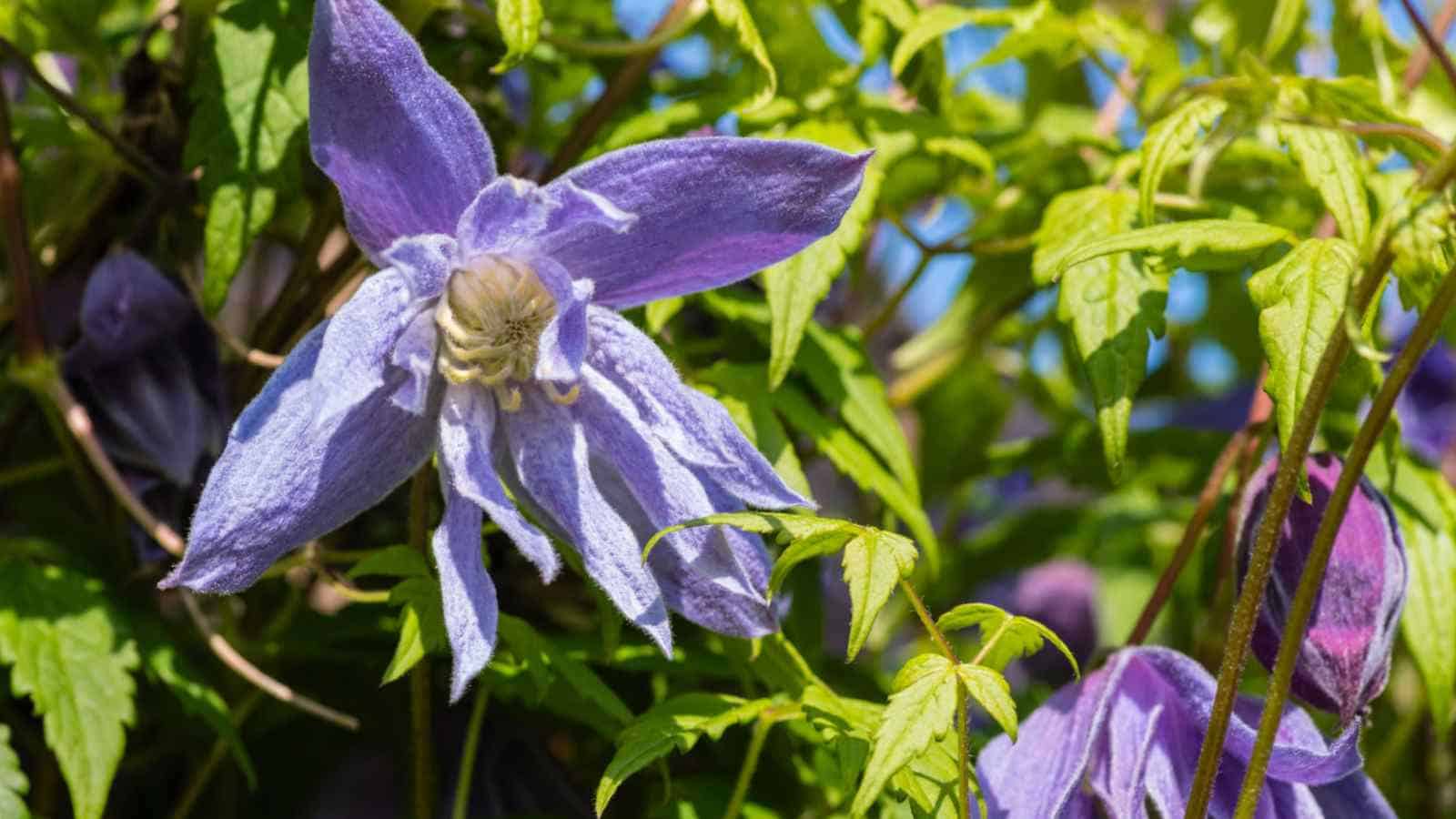
Resembling Tinkerbell’s skirt with its double flowers in light or violet-blue, the Downy Clematis is an easy-to-maintain vine suitable for gardens in USDA Zones 4-9. It’s a delightful addition to any north-facing garden, providing a touch of elegance and charm.
Solitary Clematis (Clematis rooguchi)
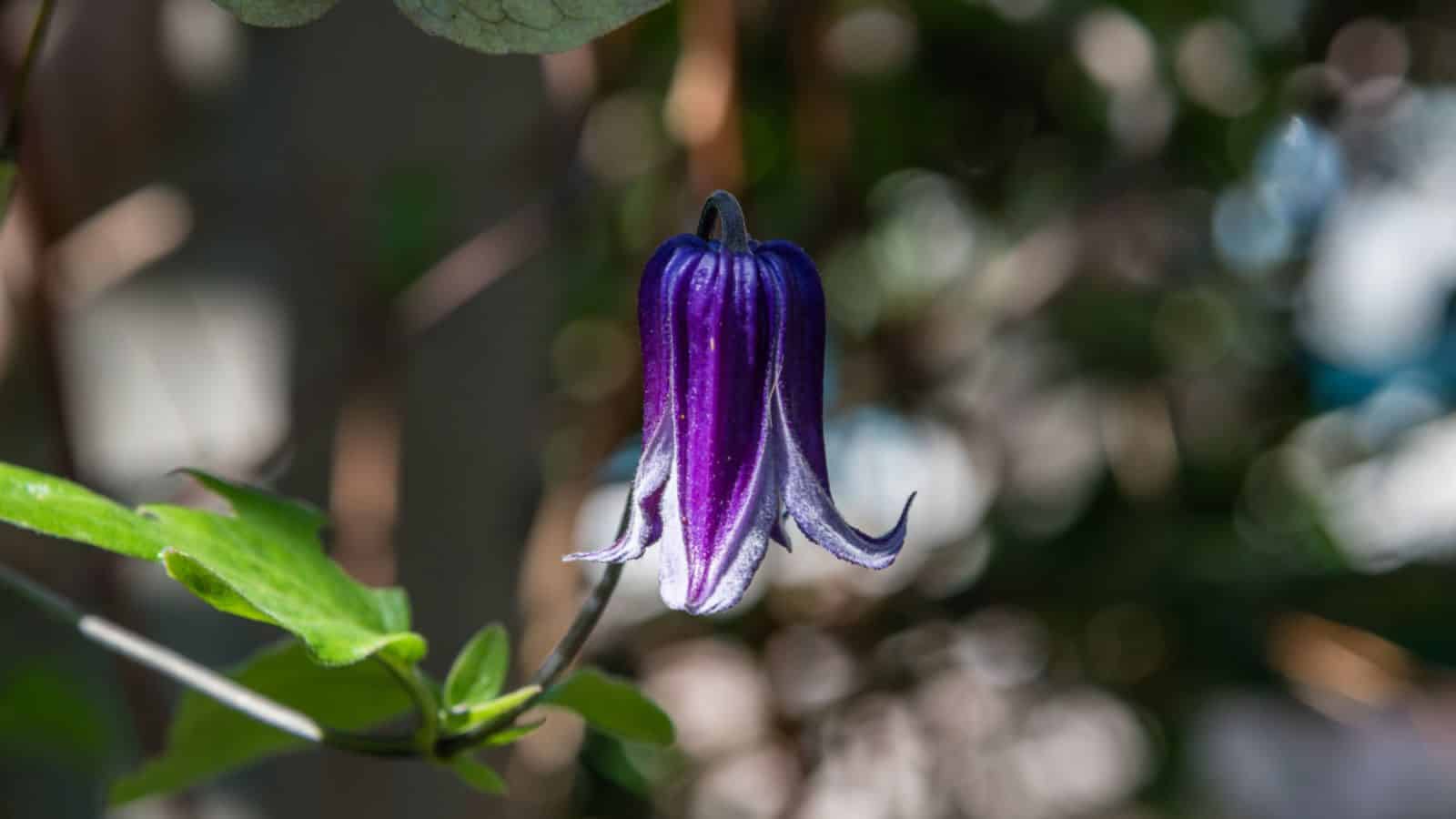
This petite climber shines best when potted and allowed to trail over a trellis or cage. Flourishing in USDA Zones 3-7, its deep blue flowers contrast wonderfully with dark green foliage, making it a perfect choice for compact garden spaces.
Embracing Blue Blossoms: A Flourishing Finale
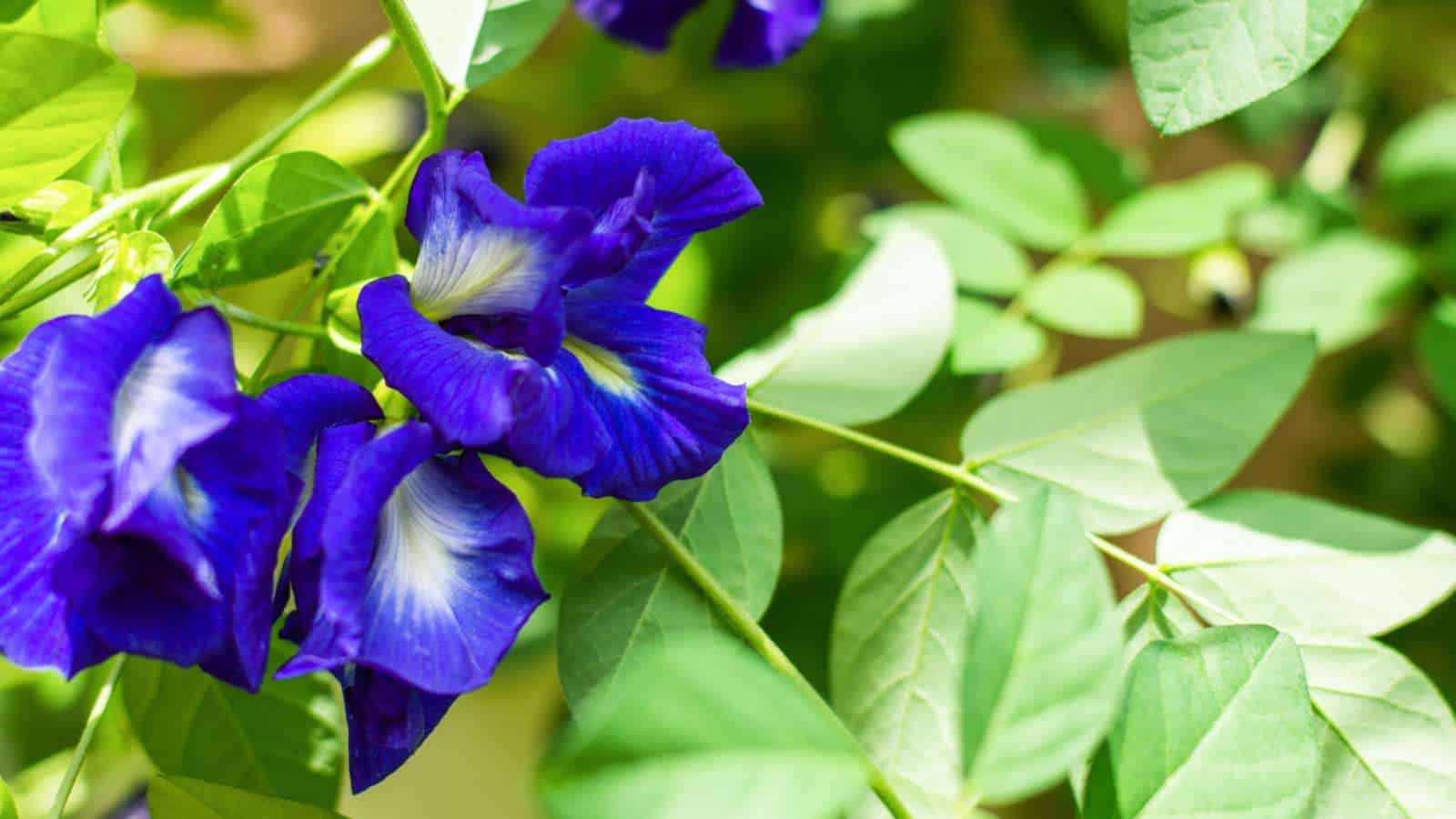
We hope you’ve found inspiration to transform your garden into a true haven of beauty and wonder. From the velvety blues of the Bengal Clock Vine to the petite charm of the Solitary Clematis, each of these botanical treasures has its unique allure. So, plant your favorites, care for them with love, and let your garden flourish with the soothing and captivating hues of blue.
Other Flower Guides from Planet Natural:











